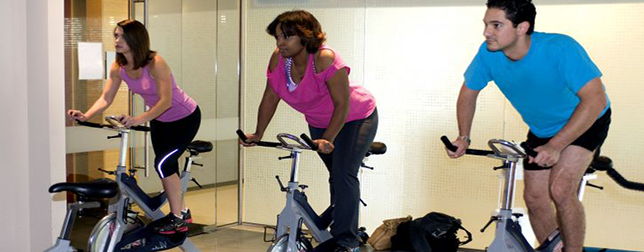If you’ve used a fitness tracker or running watch, you likely have seen on the display something called a ‘VO2 Max’ score. VO2 Max is all the rage in wearable technology right now.
What exactly is VO2 Max?
VO2 stands for V=volume, 02 = Oxygen, Max=maximum, hence VO2 Max is the maximum rate of oxygen consumption measured during incremental exercise. Maximal oxygen consumption reflects the cardiorespiratory fitness of a person and is a crucial determinant of their endurance capacity during prolonged exercise. As VO2 Max level changes and increases as you start exercising, it is the level at which the amount of oxygen your body processes hits its highest plateau.
Which devices track VO2 Max?
You have a choice of numerous wearables if you want to track your VO2 max up close. The most famous brands are: Fitbit Charge 2, Fitbit Ionic and high-end Garmin devices like the Garmin Forerunner 935, Fenix 5, and older devices such as the Fenix 3 HR, Forerunner 235, Garmin Forerunner 735XT and the Garmin Forerunner 630 (with a chest strap). Vivosmart 3 fitness tracker and the Huawei Watch 2 offers it as well.
Read more iBeat Announces New Funding for Wearable Heart Watch
Other brands with VO2 Max are Jabra Sport Pulse and the Jabra Sport Elite smart earbuds, which utilize VO2 Max as part of their line-up of metrics, as does the all-star Polar V800 (with chest strap), Suunto Ambit3, Suunto 3 Fitness and the Suunto Spartan Sport Wrist HR.
Why is it important for fitness buffs?
Outside factors do not affect VO2 Max, and while it perform a different job of training by heart rate, it’s a valuable tool for gauging your fitness, according to Shane Harman, Fitness and wellness product manager or Garmin.
Read more Apple Files Patent Application for Blood Pressure Monitoring Cuff
“VO2 Max is displayed as a number, anywhere from 40-80 (the total milliliters of oxygen that you can process per minute). You can therefore understand in black and white your current level of fitness,” said Harman.
“By implementing training you should hopefully see that number increase. If it is not increasing, your training is not having the desired effect and you can look to make some changes,” he continued.
How accurate are VO2 Max estimates?
Wearable tech is based on a lot of estimations, and it often compromises accuracy for convenience. That’s exactly the case here, where a precise VO2 Max test is expensive, grueling and uncomfortable.
The data currently available do not cover all VO2 Max devices, but in its white paper report, Firstbeat claimed a 95% accuracy, based on 2,690 runs from 79 individuals. That sounds like a a pretty decent compromise, given the simplicity of retrieving the data.
“In a vast majority of the measurements, the error was below 3.5 ml/kg/min and the error was evenly distributed around the mean value. For perspective, the error in a typical indirect sub-maximal test is 10-15% and in a direct laboratory test about 5%,” the Fitbit report said.













